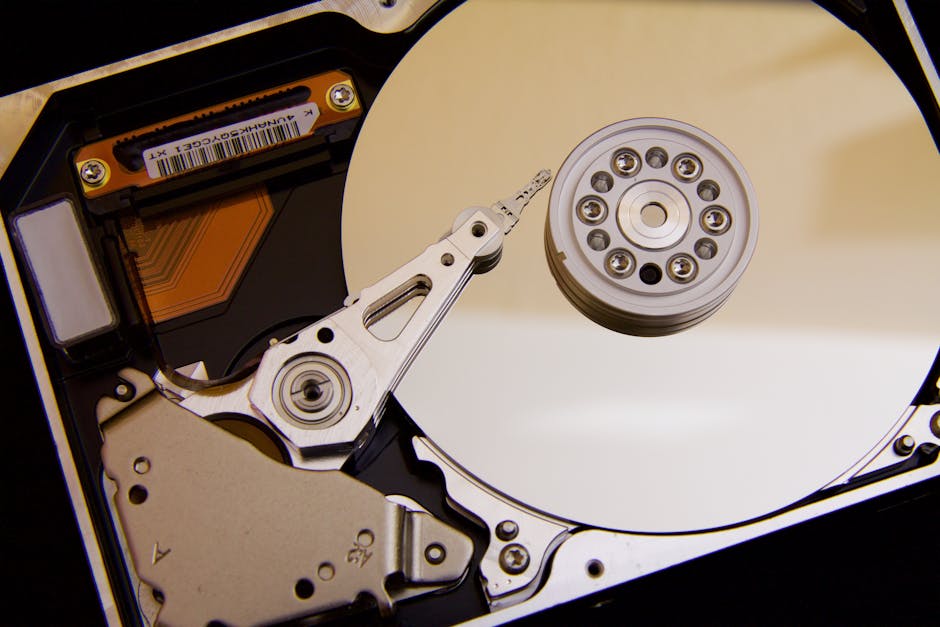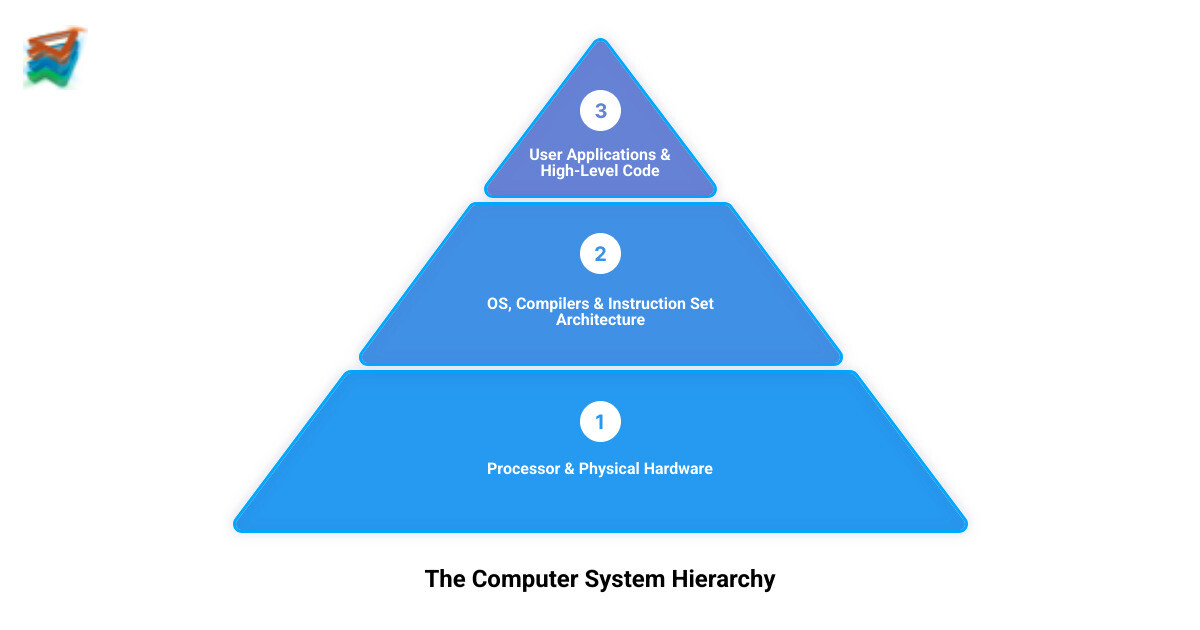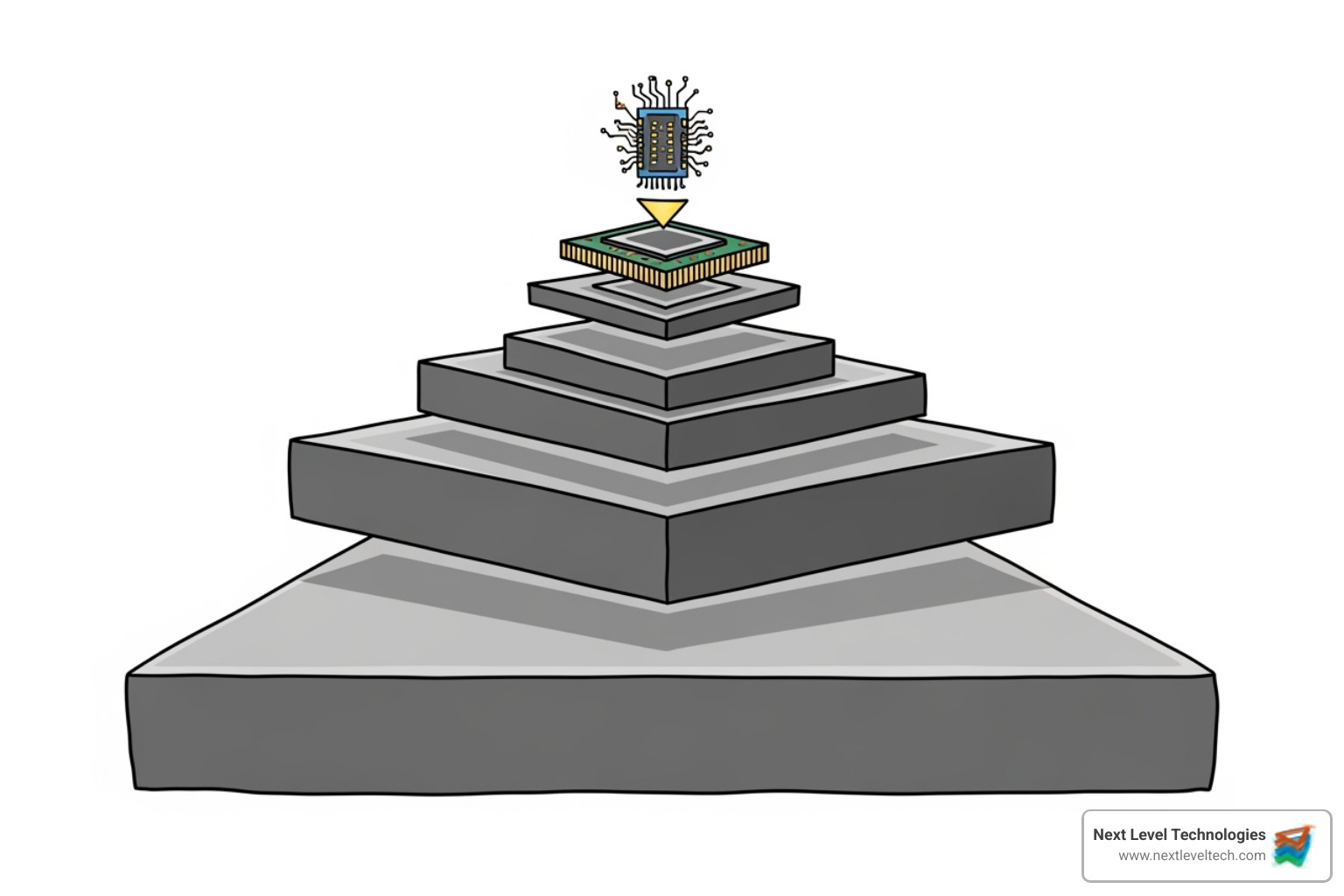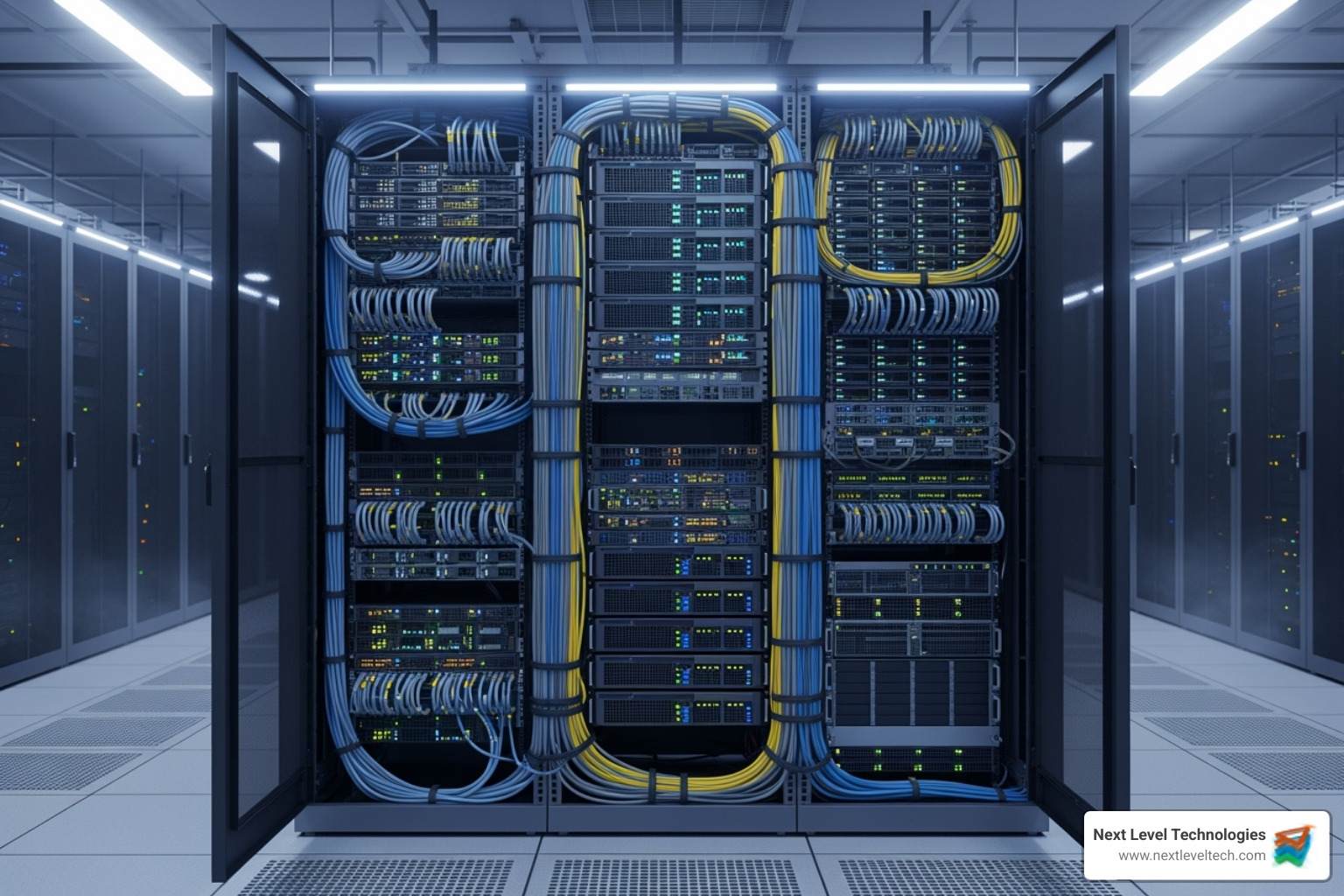Why 'Computer Organization and Design' is the Hardware/Software Bible You Need
July 29, 2025

Don't panic about data loss in Columbus, OH! Get expert Data recovery Columbus OH services. Securely recover your critical files today.
December 12, 2025

Unlock the power of Data analytics healthcare. Explore applications, benefits, and career paths to transform patient care and operations.
December 11, 2025

Unlock SMB growth! Discover essential IT solutions for SMBs to master cybersecurity, optimize infrastructure, and boost productivity.
December 10, 2025
July 29, 2025
Computer organization and design the hardware software interface is the fundamental bridge connecting the code you write to the physical circuits that execute it. This critical relationship determines everything from your application's performance to its energy efficiency and security.
Key Components of the Hardware Software Interface:
The stakes are high. Research shows that understanding this interface can improve program performance by 200 times through proper optimization. In today's PostPC era, where smartphones have surpassed PCs and cloud data centers contain up to 100,000 servers, this knowledge separates efficient systems from sluggish ones.
At Next Level Technologies, we help businesses in Columbus, Ohio, and Charleston, WV, optimize their IT infrastructure by mastering the computer organization and design the hardware software interface. Our team's extensive technical and cybersecurity training allows us to bridge this gap, enhancing real-world performance and security.

Computer organization and design the hardware software interface word roundup:
When you write code in high-level languages like Python, Java, or C++, you're writing human-friendly instructions. Your computer, however, only speaks binary. The magic happens in translation.
First, a compiler converts your readable code into assembly language. Assembly uses simple commands like "ADD" or "MOVE" that are closer to what the hardware expects. Then, an assembler performs the final translation into pure machine code—the binary instructions that make your processor act.
This process is the heart of computer organization and design the hardware software interface. It's the fundamental bridge making modern computing possible. Without it, we'd be programming in ones and zeros, a nightmare for even simple tasks.
At Next Level Technologies, understanding this translation is crucial for troubleshooting performance and optimizing systems for our clients in Columbus and Charleston. Our team's extensive technical training helps us pinpoint bottlenecks in the software-to-hardware communication chain. For more on these interactions, see our guide on computer hardware software and networking.
The ISA acts as the contract between software and hardware—the official rule book both must follow. It's the vocabulary of the hardware, defining what operations the processor can perform.
When software commands are executed, the ISA specifies available instructions (add, subtract, store data), processable information types, and how memory is accessed. This ensures hardware execution happens as expected.
A great example is RISC-V, an open-source ISA gaining popularity. Unlike proprietary architectures, RISC-V allows anyone to build processors following its specifications, fostering innovation.
The beauty of the ISA is consistency. A program compiled for a specific ISA will run on any hardware implementing it. This is why a program for an Intel processor works on different Intel chips, even with different internal designs.
Our cybersecurity-trained technicians at Next Level Technologies work with various ISAs when securing and optimizing client systems. Understanding these architectures helps us make better decisions about hardware compatibility and security across diverse IT environments.
Computer performance today is more than just raw clock speed. A program's speed is a complex interplay of several factors:
Often, performance bottlenecks lie at the interface points between these components. Our experience at Next Level Technologies, particularly in deciphering CPU usage drops: understanding task manager's role for improved performance, has shown that pinpointing these issues requires a holistic view of the system.
Consider matrix multiplication, a common operation in AI and graphics. A standard C program might run, but inefficiently. By understanding the computer organization and design the hardware software interface, programmers can achieve astounding improvements. Research indicates that optimizing a C program for matrix-vector multiplication can improve performance by a factor of 200! This is the difference between waiting hours and waiting seconds.
Programmers must move beyond writing functional code to writing efficient code. This requires knowing how hardware operates and how software interacts with it.
Here are techniques used to maximize performance:
Amazingly, these four optimizations for matrix multiplication add just 24 lines of C code. This shows the profound impact of small, informed changes when you understand the computer organization and design the hardware software interface. This is a core philosophy at Next Level Technologies, ensuring our managed IT services in Columbus, Ohio, and Charleston, WV, are built on deep technical insight. We don't just fix problems; we optimize systems for peak performance.
Certain fundamental principles have shaped computer design and form the bedrock of computer organization and design the hardware software interface. These timeless concepts continue to drive innovation.

Here are the "Eight Great Ideas in Computer Architecture" that are foundational to modern computing:
The computing world has shifted to the PostPC Era, dominated by mobile devices and massive cloud data centers.
Personal Mobile Devices (PMDs) like your smartphone prioritize energy efficiency and compact design. On the other end are Warehouse Scale Computers (WSCs), data centers with up to 100,000 servers built for massive scalability and continuous operation.
This evolution changes the priorities in computer organization and design the hardware software interface. The teams at Next Level Technologies in Columbus, Ohio, and Charleston, WV, are experts at navigating this landscape. Our deep technical and cybersecurity training means we understand the underlying architecture of modern systems, whether optimizing mobile access or leveraging scalable cloud solutions. For more on cloud infrastructure, see our information on cloud hardware infrastructure.
For decades, computers got faster by increasing clock speeds, but this hit a "power wall" due to excessive power consumption and heat. This led to a critical industry shift from sequential to parallel processing.
Instead of making one core faster, designers put multiple processing cores on a single chip. Now, software must be written to leverage these multiple cores for efficient performance. Parallelism is everywhere:
The memory hierarchy is a clever design that provides both the speed of small, expensive memory and the capacity of large, inexpensive memory. It's a tiered system:
This hierarchy improves performance by taking advantage of data locality—the tendency of programs to reuse data and instructions. Virtual memory extends this by using disk space to give programs the illusion of more memory than is physically available. Managing this system, including cache coherence, is essential for high-performance computing. For a deeper dive, see the classic text [PDF] Computer Organization and Design: The Hardware/Software Interface.
Energy efficiency is a critical concern in the PostPC era.
Both hardware and software are key to energy efficiency. Hardware has power-saving features, and programmers must write code that uses them effectively. The fact that smartphones passed PCs in units manufactured per year in 2011 highlights the importance of energy efficiency. At Next Level Technologies, our deep technical and cybersecurity training helps us design cost-effective, sustainable IT solutions. We advise clients on optimizing their computer hardware problems and solutions for energy efficiency, ensuring systems are both powerful and smart.
Here are answers to common questions about computer organization and design the hardware software interface.
An Instruction Set Architecture (ISA) is the translator between software and hardware. It's the specific set of low-level instructions a processor understands, like "add," "load," and "store."
The ISA is the definitive contract between hardware and software, defining data types, registers (fast CPU storage), and memory addressing. Once software is compiled for an ISA, it can run on any hardware that implements that same ISA, ensuring compatibility.
For many everyday applications, you can. High-level languages and operating systems abstract away most hardware details. However, for performance-critical software—like video games, AI models, or large-scale data analysis—understanding the hardware is crucial. This is especially true with modern parallel processors, where inefficient code leaves computational power unused.
At Next Level Technologies, our team's extensive technical training helps us analyze the computer organization and design the hardware software interface to find these inefficiencies. We've seen applications crawl because they weren't using the multicore processor correctly. In competitive industries, leaving that performance on the table is not an option.
Cloud computing is built on the principles of computer organization and design the hardware software interface, applied at a massive scale. Cloud services run on Warehouse Scale Computers (WSCs)—data centers with up to 100,000 servers.
In these environments, performance optimization is critical for serving millions of users, energy efficiency is key to profitability, and reliability through redundancy ensures services stay online.
At Next Level Technologies, our teams in Columbus, Ohio, and Charleston, WV, use this deep understanding daily. When we design cloud solutions, we architect systems that leverage massive parallel resources efficiently and securely. Our extensive cybersecurity training allows us to protect these systems at every level of the hardware-software stack. The cloud isn't magic; it's well-engineered computer organization.

The journey from high-level code to electrical pulses reveals the complexity of modern computing. Computer organization and design the hardware software interface is not an academic concept; it's the foundation of every digital experience.
We've seen how this understanding transforms sluggish programs, how the shift to multicore processors demands parallel thinking, and how the memory hierarchy efficiently balances speed and size. In the PostPC era, with powerful smartphones and data centers with 100,000 servers, energy efficiency has become as important as raw performance.
Understanding this interface is about empowering innovation. Grasping how software speaks to hardware lets you push boundaries—optimizing for speed, designing for energy efficiency, or architecting for reliability.
At Next Level Technologies, our teams in Columbus, Ohio, and Charleston, WV, live this philosophy. Our extensive technical and cybersecurity training means we understand systems at their deepest level. We use this knowledge of the hardware-software relationship to design and manage robust IT infrastructures that meet today's needs and anticipate tomorrow's challenges.
We bridge the gap between complex technical concepts and practical business solutions. The future of computing will evolve, but the fundamental principle remains: the hardware-software interface will always be the critical bridge turning human ideas into digital reality.
Don't panic about data loss in Columbus, OH! Get expert Data recovery Columbus OH services. Securely recover your critical files today.
December 12, 2025
Unlock the power of Data analytics healthcare. Explore applications, benefits, and career paths to transform patient care and operations.
December 11, 2025
Next Level Technologies was founded to provide a better alternative to traditional computer repair and ‘break/fix’ services. Headquartered in Columbus, Ohio since 2009, the company has been helping it’s clients transform their organizations through smart, efficient, and surprisingly cost-effective IT solutions.
